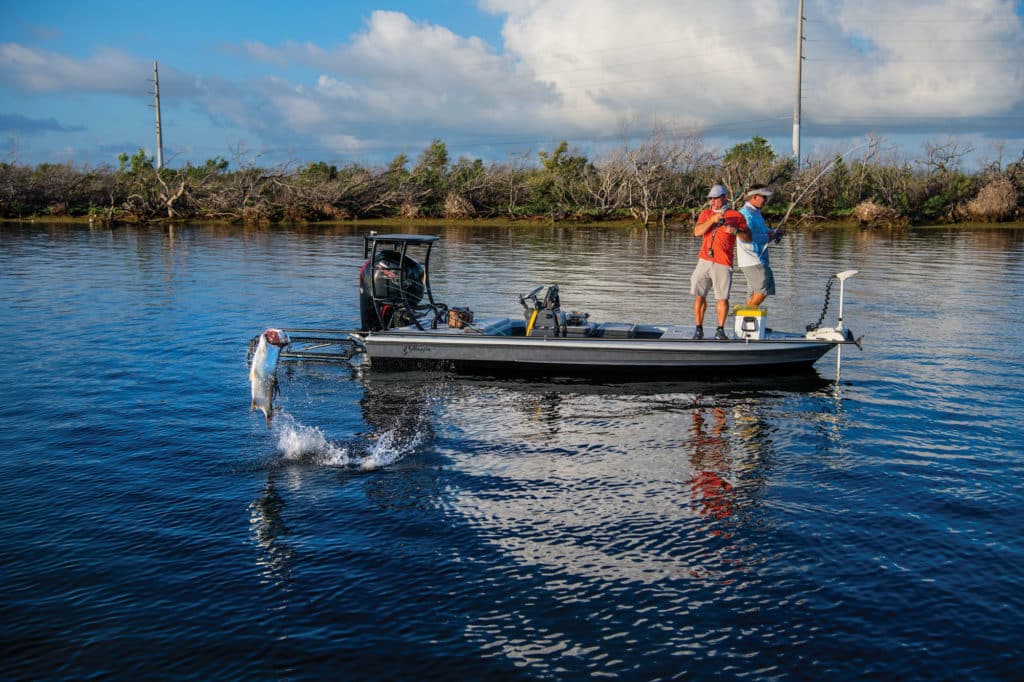
I’ve noticed that it usually corresponds with the first sign of appias drusilla, the tropical white butterflies seen fluttering alongside mangrove shorelines. It’s that magical time of year when royalty arrives: the annual influx of tarpon reaches the backcountry.
It’s not the 100- to 200-pound mammoth silver kings that are the focus of my forays then, but rather the next generation of megalops, the under-40-pounders.
There’s something about setting your sights on a group of early-morning rollers as the sun peeks over the mangrove tops, the extended series of acrobatic jumps that follow a hookup, and the back-saving grace that comes with landing these smaller, albeit every bit as entertaining, silver princes.
Welcoming Waters
A hidden gem, Estero Bay often gets snubbed in favor of other inshore spots along the southwest Florida coast.
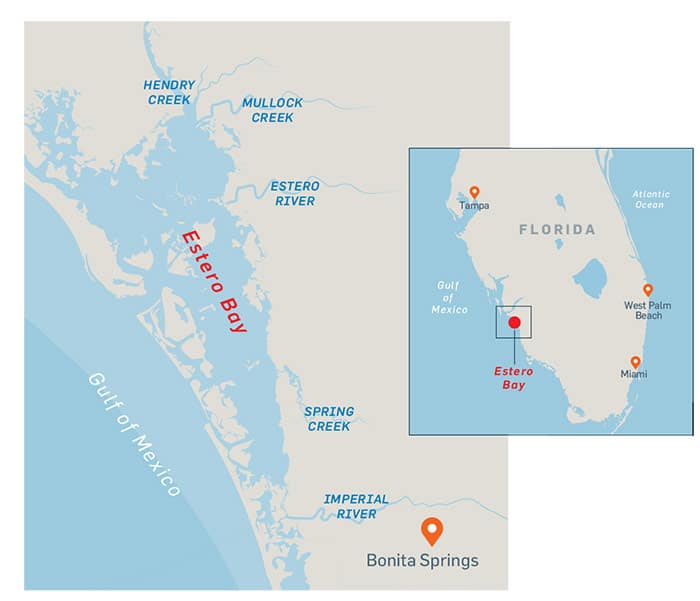
“Many anglers don’t realize that two rivers and three creeks feed into the bay, making the fishery distinctive and welcoming to juvenile tarpon,” says Capt. Matt DeAngelis, who targets the smaller quarry in the shallow waters of this estuarine system from his 22-foot bay boat.
From late March through June, juveniles are generally found in 3 to 4 feet of water, outside the bay’s creek and river mouths. Water temperature, light conditions, tidal current and forage base all play significant roles in the quest for mini-tarpon success.
“As soon as bay water temperatures climb back up to 75 degrees, juvenile tarpon start moving out of the rivers and creeks where they winter, leaving behind the dark water and muddy bottom to stage around creek mouths and venture into the bay,” DeAngelis explains.
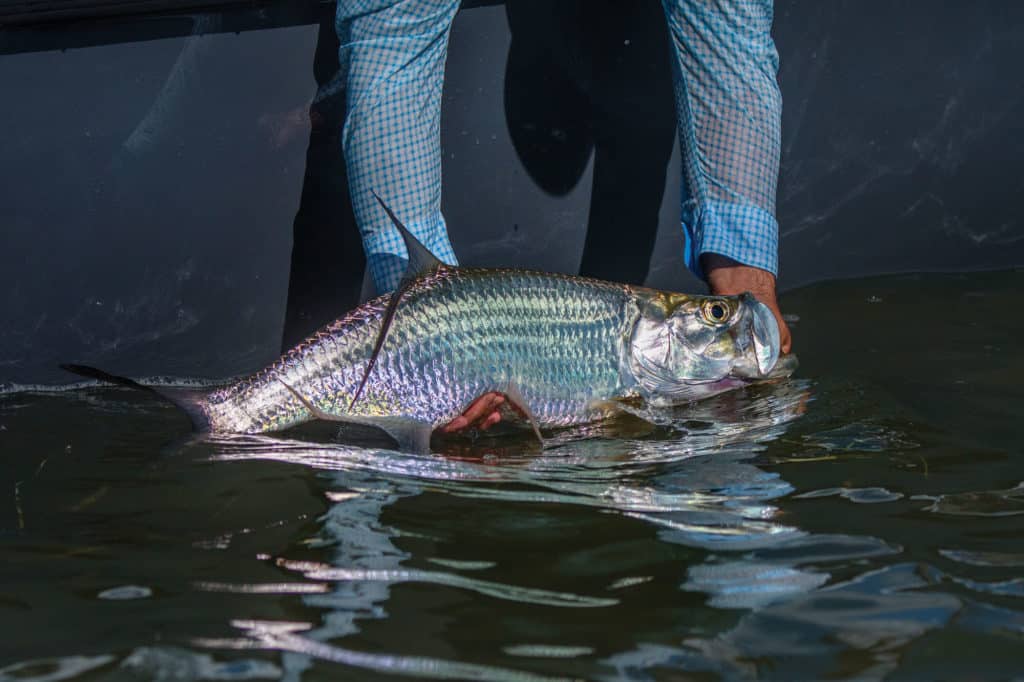
The dark, tannic inflows from Hendry Creek, Spring Creek, Mullock Creek, and the Estero and Imperial rivers all empty into Estero Bay from the north and east, creating ideal conditions for young tarpon—in the 5- to 30-pound range—that eagerly accept both lures and live bait.
DeAngelis often homes in on areas near Spring Creek and Rocky Bay during the spring months. He uses a spinning rod matched with a 3000 or 3500 series reel spooled with 15- or 20-pound braid and 24 to 30 inches of 30-pound fluorocarbon leader to cast artificials that mimic the finger mullet and glass minnows that juvenile tarpon feed on as they move out of their winter haunts.
“I use 3-inch D.O.A. C.A.L. Shad Tails to match the available bait, and rig them on Owner ⅛-ounce 3/0 TwistLock hooks,” he explains. “If that’s not getting strikes, I’ll try a 2 1/2-inch Rapala Twitchin’ Mullet, and go back to cover the same area.”
Like DeAngelis, I quickly picked up on the importance of casting along a mangrove wall twice, using different artificials.
The fish were rolling, however, in typical finicky tarpon fashion. There were times when they refused my initial casts, but then inhaled a different lure.
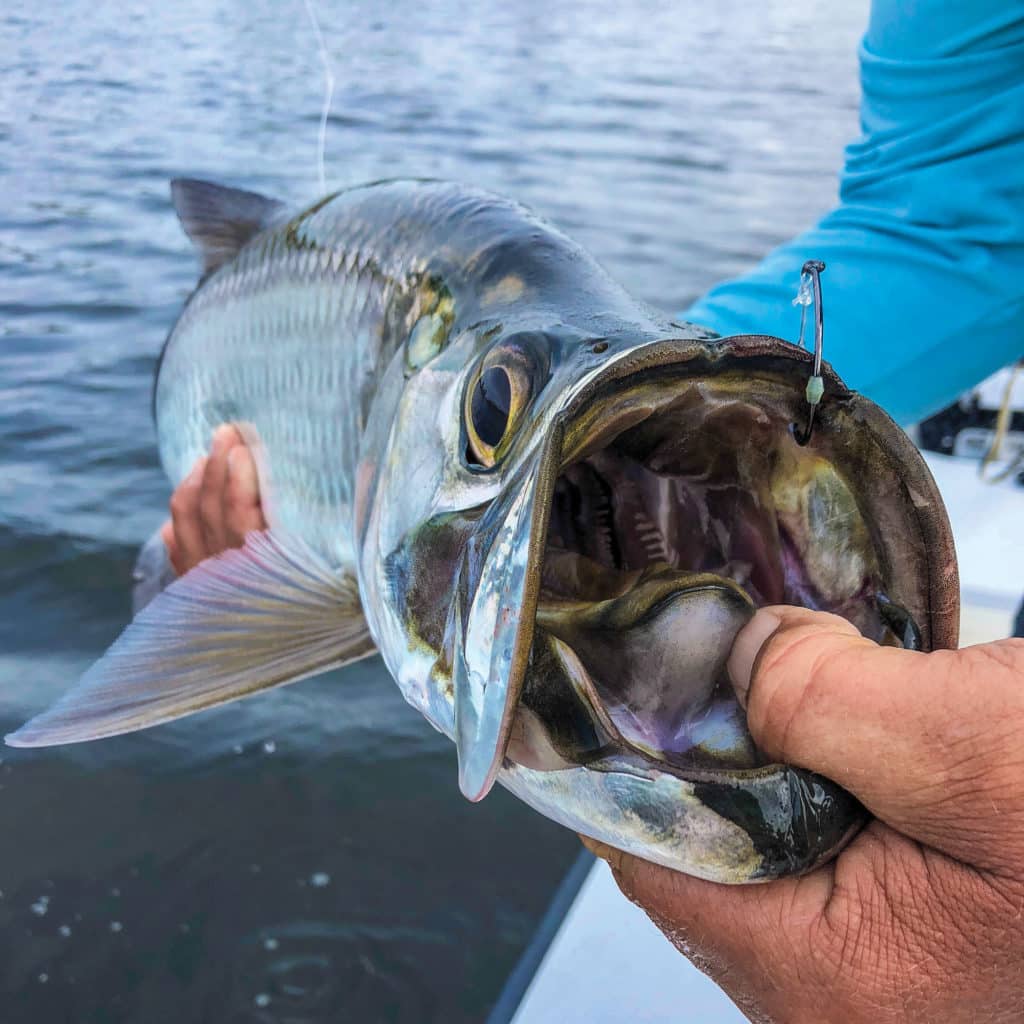
I knew that this all came down to selecting the preferred profile and presenting it in a manner that accurately imitated the natural behavior of the forage.
“You have to pay close attention to the speed of your retrieve when fishing artificials,” DeAngelis says. “Know how to twitch the tip of your rod to bring life to your lure, but remember that slower is always better.”
Timing Matters
Being on the water during early-morning or evening low-light conditions is a major part of the juvenile tarpon game.
On mornings when juvenile tarpon are holding to their late-spring through fall patterns, Capt. Greg Stamper is usually the first out of Fish-Tale Marina.
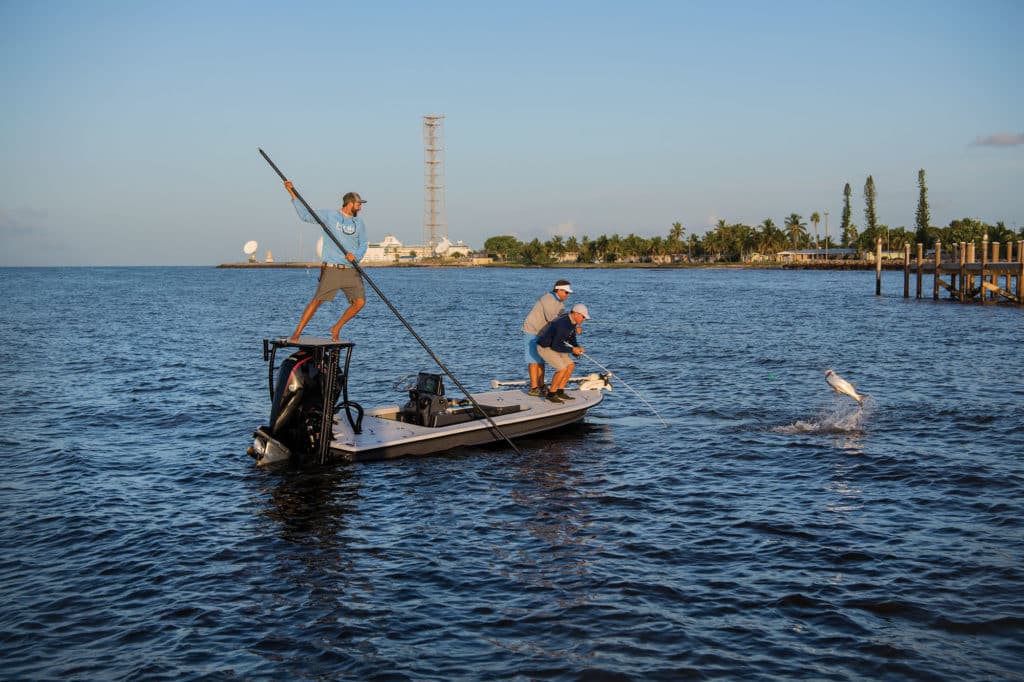
“I can’t stress enough the importance of getting to your spot before first light,” he says. Stamper looks for multiple fish rolling in the same direction to determine whether or not they are actively feeding.
“You have a two-hour -window of opportunity, once the sun starts to rise. If you are fortunate enough to have an overcast day, then you’ll be able to get another hour of good action.”
His preferred bait is a live 3-inch pilchard rigged on a 2/0 VMC 3X inline circle hook.
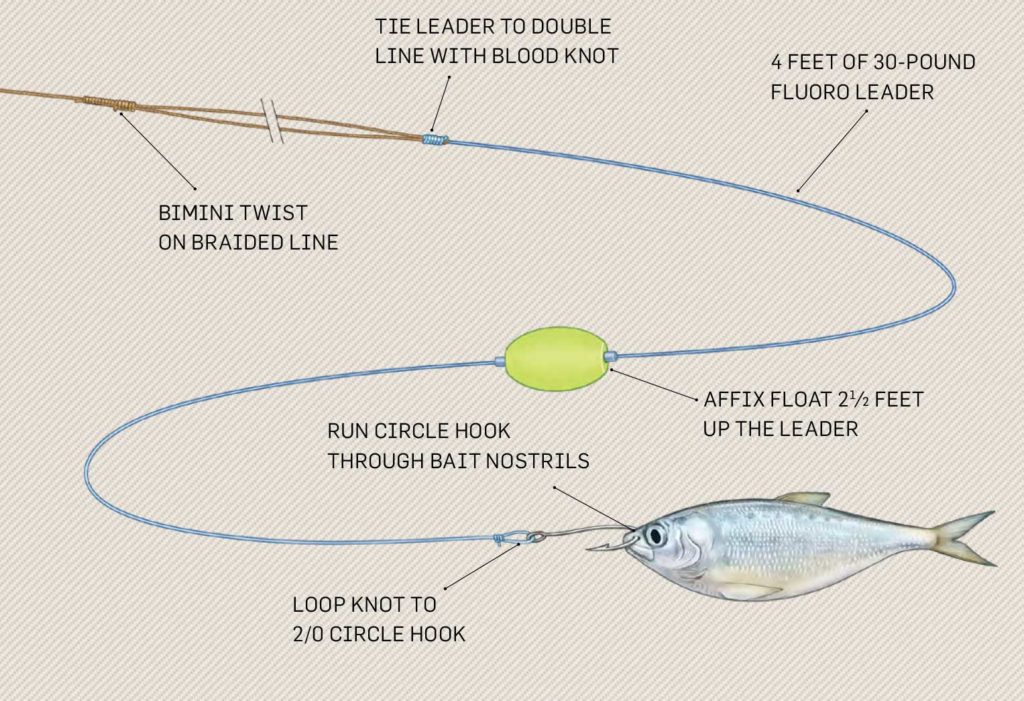
To help prevent leader mishaps, Stamper ties a Bimini twist on the end of his 15-pound braid before connecting it to a 4-foot section of 30-pound fluorocarbon leader with a blood knot, and then fastening an oval foam float 2 1/2 feet up the leader from the hook.
Tying the leader to the double line increases the effectiveness of the braid, reducing the chance of the small-diameter braided line slicing through the fluorocarbon at the knot.
Changing Tides
I’ve learned to plan my creek and river trips based on either the latter part of an incoming tide or the first part of an outgoing.
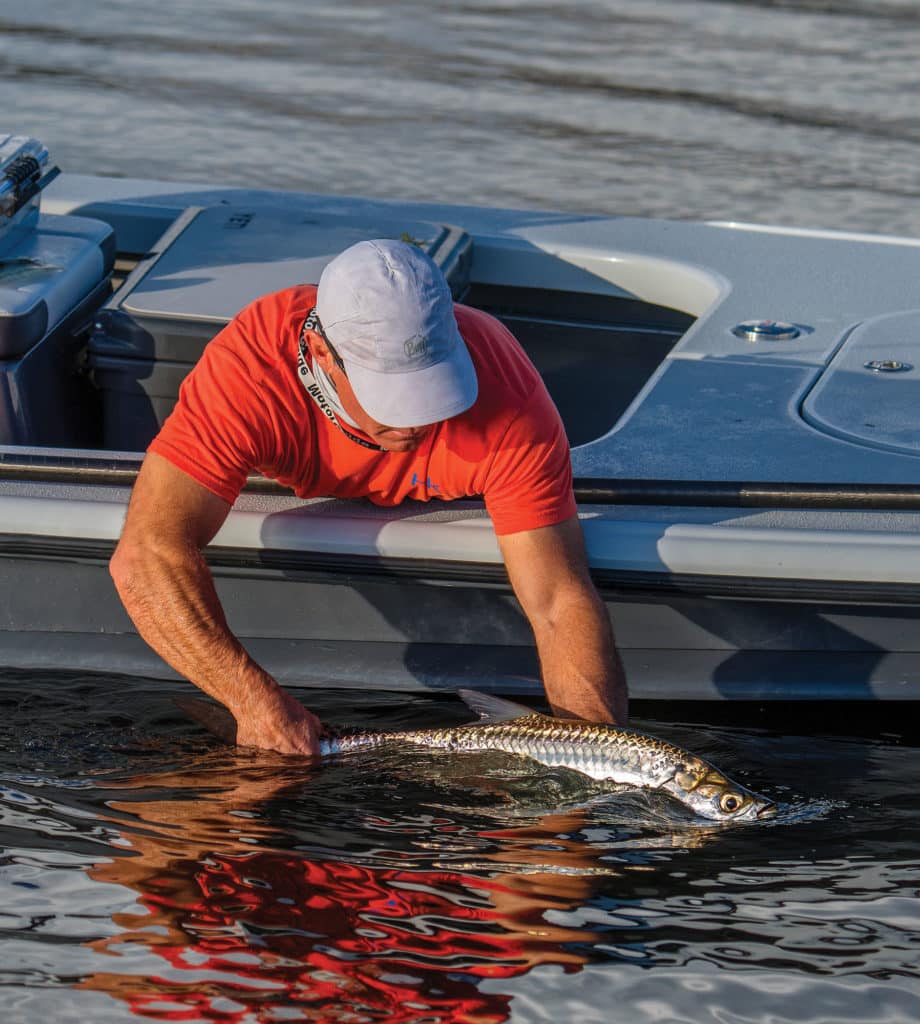
Southwest Florida native Capt. Codty Pierce regularly targets juvenile tarpon in Estero Bay, and he routinely follows the tide, focusing on the main discharge areas that come from the backcountry. This includes creek mouths, lagoon systems or flats, but he also pays close attention to bottom composition, seeking out mud or oyster bars.
Pierce likes to stick to shrimp-imitating lures during the spring months. He recommends using a D.O.A. 3-inch soft-plastic shrimp, or a similar artificial shrimp.
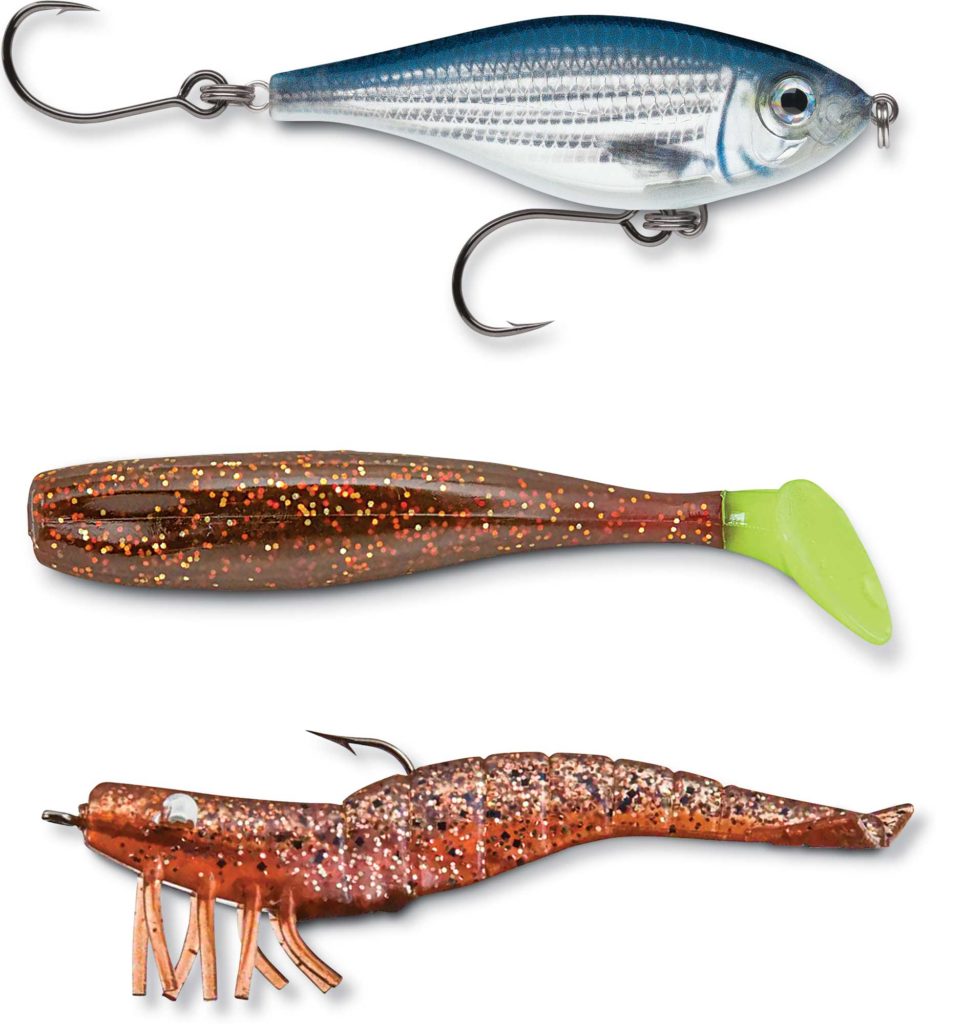
“The shrimp sinks fast, and allows you to cover more ground and make enticing presentations. This is particularly important if the tarpon are holding in deeper holes,” he explains. “I believe in the effectiveness of small profiles in this type of tarpon nursery habitat.”
Once the bay water temperature rises above 75 degrees and baitfish become more prevalent, he switches to lures that mimic finger mullet and pilchards.
“I’ll use a 3-inch D.O.A. Shad Tail as we get closer to summer,” he says. “Start with a slow-and-steady retrieve. If you don’t get a reaction swimming it horizontally, try the opposite and jig it,” he adds.
While it may require a change of lure or modifying your technique to suit the conditions, there’s no question that springtime is prime time for juvenile tarpon in Estero Bay.









